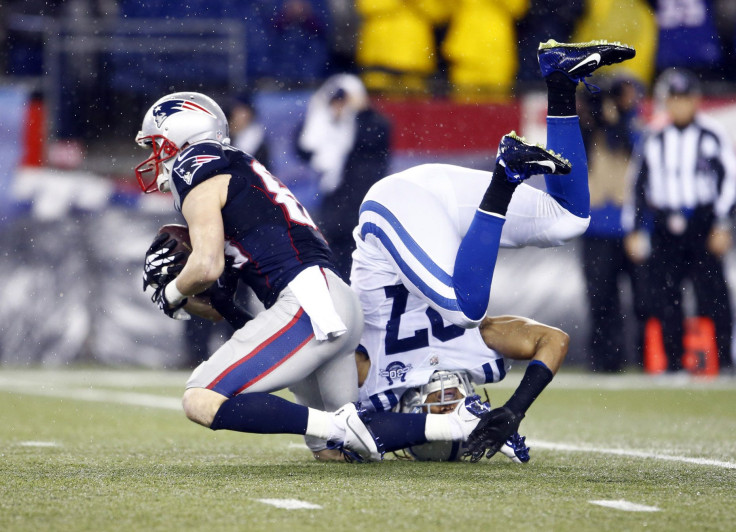Does CTE Really Exist? Expert Questions Studies That Find Rare Brain Disease In Ex-NFL Players

Some media outlets, like Frontline, have dubbed the damaging effect of head injuries related to professional football as the “NFL’s concussion crisis.” The alarming headline is based on studies linking traumatic brain injuries from playing the sport to retired players suffering from a rare brain disease called Chronic Traumatic Encephalopathy (CTE). But a neuropsychologist at Loyal University Medical Center is skeptical about the proof and questioning whether CTE even exists.
“There has not yet been one controlled epidemiological study looking at the risk of late-life cognitive impairment in any collision sport, including boxing, American football, or other sports involving repetitive head trauma,” Randolph argued in the journal, Current Sports Medicine Reports.
CTE is often associated with behavioral changes marked by anger, aggression, and suicidal tendencies while cognitive impairments, such as learning and memory difficulties, are also common. Randolph took issue with the premise of several studies that looked at CTE. One in particular, published in Brain, identified suicidal tendencies as a key feature of CTE and reported detecting the disease in 97 percent of the brains of the retired NFL players they analyzed. Randolph countered that the mortality rate of retired NFL players is half that of men their age in the United States while suicide rates are 60 percent less than the national average for men. “[T]he recently published data on cause of death in NFL retirees do not support the probability of a markedly elevated risk,” he concluded.
With regard to the same Brain study, Randolph also differed with the authors’ decision to define CTE based on the presence of an abnormal type of protein, called tau, which is often implicated in Alzheimer’s disease. This form of tau, he argues, isn’t unique to diseases like CTE, while its presence doesn’t necessarily indicate either that damage to nerves in the brain is occurring or that a person will suffer from cognitive and behavioral changes.
“Overall,” he concluded, “although retired NFL players have been the focus of more attention into the potential late-life neurological consequences of repetitive head trauma than athletes in any other sport, the risks for these retirees remains largely hypothetical.” He added that the broad list of symptoms that are associated with CTE is too broad to be considered at all meaningful in diagnosing this clinical syndrome. He listed CTE symptoms that ranged from paranoia to memory loss, language impairment to apathy, commenting that “they encompass a range of symptoms from those that are common in the normal healthy population to those observed in a variety of neurological diseases.”
The purpose of refuting many influential CTE studies, Randolph explained, is not to completely dismiss the notion that the disease even exists but, rather, to point out that the current apprehension about the NFL — and other sports — is based on flimsy proof. Furthermore, he added, “this type of information may lead individuals experiencing depression to misinterpret their symptoms as indicative of the first stages of a fatal neurodegenerative disorder.”
Randolph called for stronger epidemiological studies that have large samples of ex-NFL players who are compared with age-matched, non-football playing counterparts “without a history of involvement in collision sports.” If there proved to be an increased risk from playing in the NFL, he suggested following retired players over time and using imaging to detect any changes that indicate neuropathology.
Recently, the NFL partnered with the National Institutes of Health to support research into how brain changes can occur after traumatic head injury and multiple concussions.
Source: Randolph C. Is Chronic Traumatic Encephalopathy a Real Disease. Curr Sports Med Rep. 2014.



























